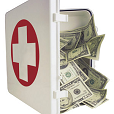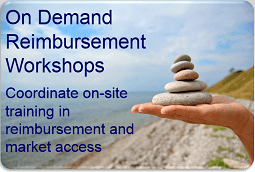No matter how hard you try to manufacture a safe, efficacious, and quality product, it is not going to generate the revenues you anticipated unless it can be properly reimbursed.
Here are some quick Do's and Don'ts of the reimbursement process. (Some details have been modified to protect company privacy).
1. Do - Develop your reimbursement strategy early
Don't - Delay developing your reimbursement strategy until just before your product launch.
Real life examples:
- Example #1: Company A developed a 4-sensor product that competed with other available 6-sensor products. This product was clinically better and less expensive than its competitors. The company invited Mediclever to check whether they could utilize existing reimbursement mechanisms in France. A short assessment revealed available codes, a positive coverage policy, and payment rates that exceeded the company's expectations. However, the wording in the identified existing codes specifically indicated 6 sensors! Redesigning the product at that stage was too difficult, and the company was left out of the French market.
- Example #2: Company B developed and launched a product in the US market. Unfortunately, the pressure settings employed by their product deviated from the allowable range specified under existing reimbursement mechanisms. The CEO asked Mediclever to provide them with a 'reimbursable' specification. The company is currently redesigning their product according to this spec.
Verify that existing clinical data supports the clinical and economic claims in the Value Story and economic model or add reimbursement related aspects to any planned clinical study protocol, along with the company's estimated results.
Your reimbursement strategy could affect your product design.

2. Do - Consider reimbursement when selecting an appropriate application
Don't - Choose your "killer app" only on the basis of R&D, regulatory criteria, or marketing.
Real life example:
Company C developed a platform that could be used for a few applications. The company invited Mediclever to develop and implement its reimbursement strategy, while its pivotal trial, focused on Application I, was underway.
Mediclever's assessment discovered that if the company proceeded with the current Application I, the likelihood for reimbursement was low and might only be granted in five to ten years at a considerable investment. On the other hand, if the company used the same device for Application II, immediately upon receipt of the CE mark, the device would be reimbursed at a lucrative rate. Obviously, the company realized that by continuing with Application I, the company would probably not survive to reach profitability.
Consequently, the company abandoned Application I and is currently selling its product, under existing reimbursement mechanisms, for Application II.
Your reimbursement strategy could affect the first application of your product.

3. Do - Leverage your clinical trial(s) to gather reimbursement related data
Don't - Focus only on the regulatory aspects.
Real life example:
Company D developed outstanding clinical data for their product and invited Mediclever to help them develop specific reimbursement mechanisms for it. All Payers that Mediclever approached were impressed by the developed clinical 'evidence', but wanted the company to also present data regarding a few economic aspects. Since these economic aspects were not observed during the company's previous clinical trial, the company had to perform a new trial to gather the requested data.
Had the company thought about its reimbursement strategy prior to initiating the clinical trials, those economic aspects could have been easily integrated into their previous trials making the investment in a new trial, and the delay in the sale of their product, redundant.

4. Do - Develop your regulatory and reimbursement strategies in parallel
Don't - Think that since regulatory clearance comes before obtaining reimbursement that this is a serial process.
Real life example:
Company E asked Mediclever to start working on its reimbursement strategy after applying for, and receiving, the regulatory clearance. Unfortunately, the wording that was used in the application substantially decreased the likelihood of reimbursement. Consequently, the company re-applied for the regulatory clearance, this time, with a modified indication for use.
Needless to say, this delayed the launch of the product resulting in substantial loss to the company.
Short regulatory path ≠ optimal reimbursement.

Summary
We hope that these real-life examples will help avoid some of the above mentioned mistakes, reduce costs, and reach the market sooner.
If you have any reimbursement related questions, or would like to speak with one of our consultants, just let us know.
Mediclever can assist by developing an appropriate reimbursement strategy, by guiding you through the development of the required evidence and by leveraging its contacts in North American and European healthcare markets in order to apply for, and obtain, reimbursement for your product.


